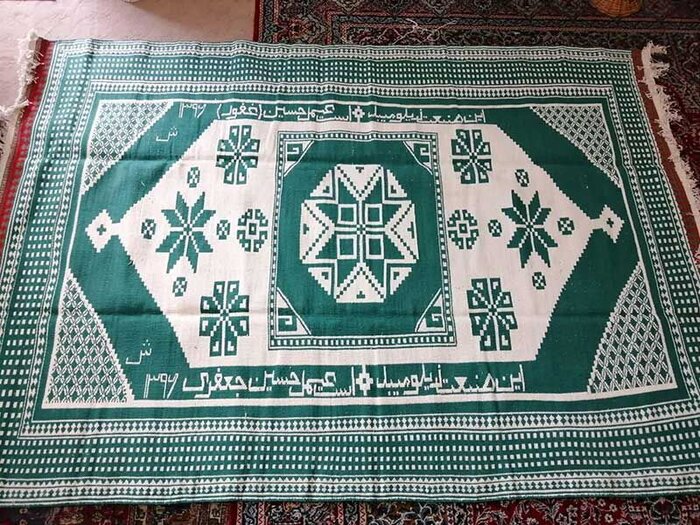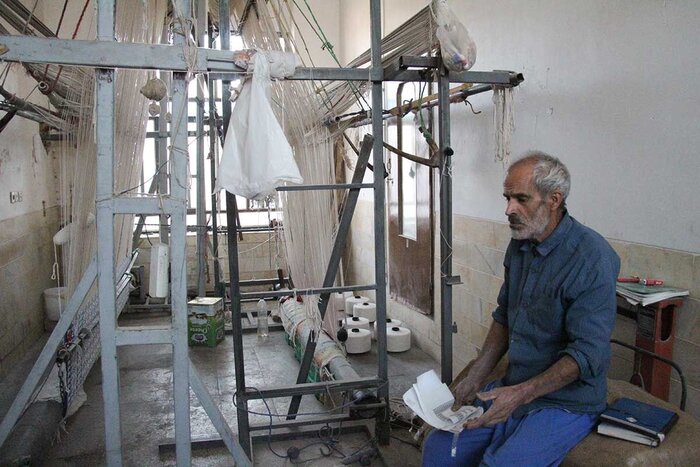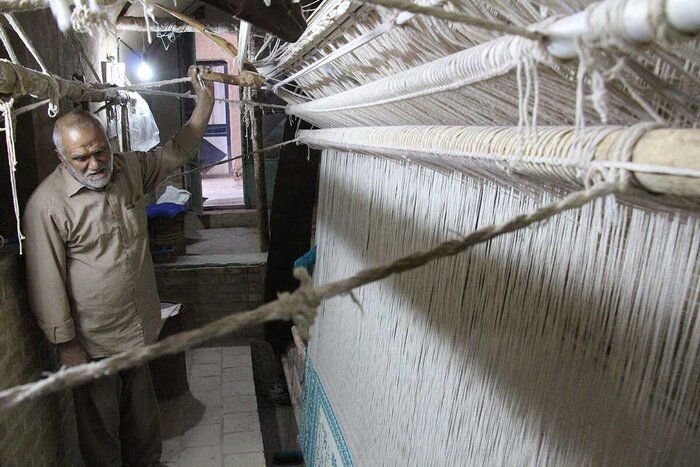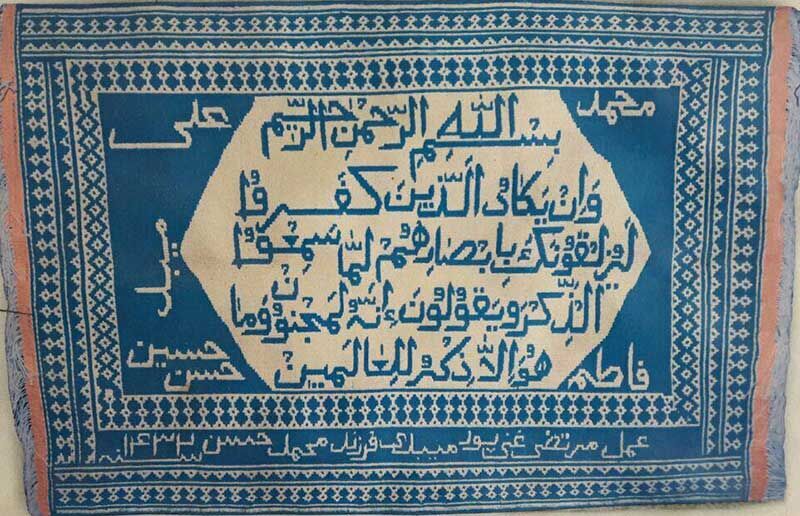Zilu-weaving is an ancient handicraft in Meybod county in central Iran. Weaving epigraphs into a Zilu requires so high level of skill that can only be found among past masters.
Zilu is a simple floor covering, but sometimes is so mixed with artistry that it is instead used as an artistic work on the wall or in the museum.
Zilu-weaving has a long history in Meybod and some trace its origins back to the 14th century during the reign of Muzaffarid dynasty.
The matting is peculiar to the populated areas in the desert margins and fits the local lifestyle and presents native people’s religious beliefs, history, architecture, environment and language.
Some weavers manufacture Zilus ordered to be bestowed to mosques and religious places. These Zilus have the names of the benefactor, the place, the weaver and the date of bestowment woven into them.
One of the reasons the weavers are encourage to inscribe text into their Zilus is to keep the memory of their parents, great weavers and other figures alive.
Our correspondent has reached Hossein Jafari, an outstanding Zilu-weaver in the historic bazaar of Meybod, who has been practicing the artistic work since childhood.
 |
He recalls his early days of Zilu-weaving when he was six, as many children couldn’t go to school because of difficulties in their livelihood.
Jafari says that he was able to draw wefts of the Zilu, as a more sophisticated task for an amateur weaver, only when he was eight and he used to put a chair under his feet to be able to reach the weaving machine.
He learned weaving from his father and worked in his workshop until he was a teenage and he had to leave to be hired in another workshop so that he could help his family financially.
Master Jafari says that weaving text into Zilu is such a sophisticated job and not every weavers is able to do that, as it should be woven using printed motif rather an a mental one.

He points out to a period when the Zilu-weaving market slumped and he left Iran to work in Kuwait until the country was invaded by the Iraqi army and the master had to come back home and start a new workshop in Meybod.
Gholamreza Sabbaghi is another Zilu-weaving master who is surprisingly blind, but so skillful that he weaves text into his products.
Weaving epigraphs into Zilus takes much longer time than required for simple, ordinary patterns and it becomes sometimes even more complicated with the texts written in special calligraphy styles like Thuluth and Naskh.

Hassan Emami, a lecturer and designer of Zilu motifs, tells IRNA correspondent that weaving epigraph Zilus is considered to be as the climax of Zilu-weaving craft.
The oldest known Zilu which is kept in Meybod museum dates back to 850 years ago. The most invaluable Zilu has been woven in late 17th century to be bestowed to a mosque.



